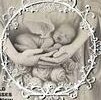How to Donate Wedding Dresses
If you’re thinking of donating your wedding dress, know that it will make a difference in someone else’s life and help a bride-to-be get her dream gown. It’ll also give your dress a second life and free up closet space. Plus, it’s environmentally friendly since unused dresses end up in landfills and produce carbon dioxide. Some charities and shops accept wedding dresses year-round, but others only take them in certain months, such as in the spring when many people get engaged. It’s also important to check the guidelines of your local thrift or charity shop before bringing in any donations. For example, the Salvation Army only takes in wedding gowns that have been worn within five years. Moreover, some charities only want used wedding dresses that are in good condition so they can be repurposed. For instance, The Brides Project sells donated dresses to raise funds for their free programming for families impacted by cancer. The proceeds of the sale also benefit the Loveland Foundation, Dressember, and more women-focused charities. Their website also provides an easy online form to donate a wedding dress. Another popular wedding dress donation option is Adorned in Grace, a nonprofit organization that aims to end sex trafficking. They have several locations across the country and an online store where you can buy used bridal dresses for a fraction of their original cost. Proceeds from the sales support professional counseling for victims, awareness publications, and more. The website’s donation form is easy to use and requires only basic information about the dress. Lastly, you can bring your wedding dress to your local Goodwill or other thrift stores. The proceeds of these sales go toward helping their missions, including job training and employment for local residents and helping disadvantaged youth. Depending on where you live, you may be eligible for an itemized tax deduction when you donate your wedding dress to these places. While selling your wedding dress is an option, it’s often easier to donate it. Selling a wedding dress is time-consuming and requires you to interact with potential buyers, which can be difficult for many brides who have already spent so much on their big day. Luckily, there are plenty of other options for those who would rather not deal with the hassle. The NICU Helping Hands program is a unique one because it turns wedding dresses into infant burial gowns or angel gowns for children who have passed away. They have about 180 seamstresses across the nation that painstakingly convert the dresses into bonnets and other keepsakes to be given to families for free. To donate a wedding dress to this program, you can fill out an online form or call their client service team for instructions.
